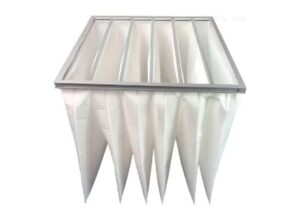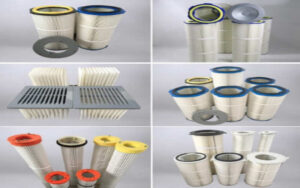Air filters are fundamental in maintaining indoor air quality across various settings, from residential homes to industrial facilities. By removing pollutants like dust, pollen, and microorganisms, they play a critical role in promoting health, safety, and comfort. This article delves into the evolution, materials, types, benefits, and applications of air filters, providing a comprehensive overview for those seeking to understand or select the right filtration solutions.
Leading Air Filter Manufacturers
Duraflow Industries
- Location: Wakeman, OH | 866-488-9399
- Specialty: Aftermarket and OEM filtration products with fast turnaround times.
Clean Liquid Systems
- Location: Spring, TX | 713-253-0100
- Specialty: High-quality air and liquid filters with a focus on customer needs.
RoboVent
- Location: Sterling Heights, MI | 888-928-4215
- Specialty: Industrial air filtration solutions for over 25 years.
Clean Air Technology Solutions
- Location: Hopkinsville, KY | 270-890-0416
- Specialty: Comprehensive air filtration with world-class facilities.
FILPRO Corporation
- Location: West Point, PA | 800-324-8940
- Specialty: Customized high-performance air filters for various applications.
Modular Cleanrooms, Inc.
- Location: Denver, CO | 800-496-7666
- Specialty: Cleanroom fan-powered and ducted air filters with modular designs.
Evolution of Air Filtration Technology
Early Beginnings
The concept of air filtration dates back to ancient civilizations, where rudimentary methods like using cloths or leaves were employed to cleanse the air. These early attempts laid the groundwork for more sophisticated techniques developed during the Industrial Revolution.
Industrial Revolution Advancements
In the 19th century, the rise of factories and increased air pollution necessitated better air filtration methods. This period saw the introduction of larger-scale air filters, primarily to protect machinery and improve working conditions.
Modern Developments
The significant air pollution issues of the 1960s and 70s spurred advancements in air filter technology. Today, air filters are integral components of HVAC systems and are essential in various applications, including healthcare, manufacturing, and transportation.
Materials Used in Air Filters
Selecting the right material is crucial for the effectiveness of an air filter. The choice depends on the specific contaminants that need to be removed.
Fiberglass
- Applications: Commonly used in residential and commercial HVAC systems.
- Benefits: Economical and efficient at capturing larger particles like dust and pollen.
- Characteristics: Minimal airflow resistance, maintaining optimal air circulation.

Activated Carbon
- Applications: Air purifiers and industrial settings.
- Benefits: Removes odors, volatile organic compounds (VOCs), and gaseous pollutants.
- Characteristics: Adsorbs contaminants onto a large surface area.
Synthetic Polymer Fibers
- Applications: Cleanrooms and environments requiring high air cleanliness.
- Benefits: Captures extremely small particles, including bacteria and viruses.
- Characteristics: Customizable filtration efficiencies.
Other Noteworthy Materials
| Material | Applications | Benefits |
|---|---|---|
| Aluminum Mesh Filters | Commercial kitchens, industries | Durable, captures grease and oil mist |
| Pleated Paper Filters | Residential HVAC systems | Cost-effective, traps larger particles |
| Cellulose Filters | Residential and commercial systems | Eco-friendly, good filtration |
| Silica Gel | Dehumidifiers | Absorbs moisture, prevents mold growth |
| Zeolite | Specialized applications | Adsorbs gases and odors |
| Carbon-Impregnated Filters | Various settings | Combines particulate and gas filtration |
| Metal Oxide Coatings | Specialized filters | Breaks down harmful compounds with UV light |
How Air Filters Are Manufactured
Melt-Blown Process
This method involves melting polymers and extruding them into fine fibers, creating a mesh with a large surface area ideal for particle removal.
Electrostatic Techniques
Filters are engineered to hold an electrical charge, attracting and capturing airborne particles more effectively than standard filters.
Pleating Methods
Pleating increases the surface area of the filter material, enhancing its ability to retain particles without restricting airflow significantly.

Types of Air Filters
Understanding the different types of air filters helps in selecting the most appropriate one for a specific application.
High-Efficiency Particulate Air (HEPA) Filters
- Efficiency: Captures particles as small as 0.3 microns with 99.97% efficiency.
- Applications: Healthcare facilities, cleanrooms, and environments requiring stringent air purity.
Ultra-Low Particulate Air (ULPA) Filters
- Efficiency: Captures particles down to 0.12 microns with 99.999% efficiency.
- Applications: Specialized laboratories and manufacturing facilities.
Electrostatic Filters
- Function: Use electrostatic charges to attract particles.
- Benefits: Enhanced ability to trap smaller particles.
HVAC Filters
- Role: Integral to heating, ventilation, and air conditioning systems.
- Benefits: Improve indoor air quality and energy efficiency.
Inline and Exhaust Filters
- Inline Filters: Used in compressed air systems to remove contaminants.
- Exhaust Filters: Purify emissions from engines and industrial equipment.
Foam and Air Compressor Filters
- Foam Filters: Common in water filtration, like aquariums.
- Air Compressor Filters: Remove moisture and oil from compressed air.
Limitations of Air Filters
While air filters are beneficial, they have certain limitations:
- Airflow Reduction: High-efficiency filters may restrict airflow, affecting system performance.
- Maintenance Requirements: Filters can become clogged and require regular replacement or cleaning.
- Limited Gas Removal: Standard filters may not effectively remove gases or VOCs without specialized media.
Benefits of Air Filters
Health Improvements
- Reduces Allergens: Removes pollen, dust mites, and pet dander.
- Minimizes Respiratory Issues: Lowers the risk of asthma and other respiratory conditions.
Environmental Protection
- Industrial Use: Protects workers from harmful airborne particles.
- Emissions Control: Filters exhaust emissions, contributing to environmental conservation.
Enhanced Comfort
- Indoor Air Quality: Creates a more pleasant environment in homes and businesses.
- Odor Reduction: Activated carbon filters remove unpleasant smells.
Applications Across Industries
Residential
- HVAC Systems: Enhance air quality within homes.
- Air Purifiers: Stand-alone units for additional filtration.
Commercial
- Offices and Retail Spaces: Improve employee and customer comfort.
- Restaurants: Kitchen hoods and ventilation systems to remove grease and odors.
Industrial
- Manufacturing Plants: Protect machinery and workers from dust and fumes.
- Cleanrooms: Maintain sterile environments for electronics or pharmaceutical production.
Healthcare
- Hospitals: Critical in operating rooms and patient areas to prevent infection.
- Laboratories: Ensure contamination-free environments for research.
Transportation
- Aviation: Maintain cabin air quality for passenger health.
- Automotive: Cabin air filters enhance passenger comfort and health.
Choosing the Right Air Filter
Factors to Consider
- Identify Contaminants: Understand the specific pollutants present.
- Filtration Efficiency: Determine the level of particle removal needed.
- System Compatibility: Ensure the filter fits and functions within the existing system.
- Maintenance Needs: Consider the ease of replacement and cleaning.
- Cost: Balance initial costs with long-term benefits.
Consulting Professionals
Engaging with HVAC experts or filtration specialists can provide tailored solutions to meet specific needs.
Conclusion
Air filters are indispensable in promoting health, protecting equipment, and ensuring comfortable environments. By understanding their evolution, materials, types, and applications, individuals and organizations can make informed decisions to meet their air quality needs. Regular maintenance and selecting the appropriate filter type are crucial for optimal performance.






